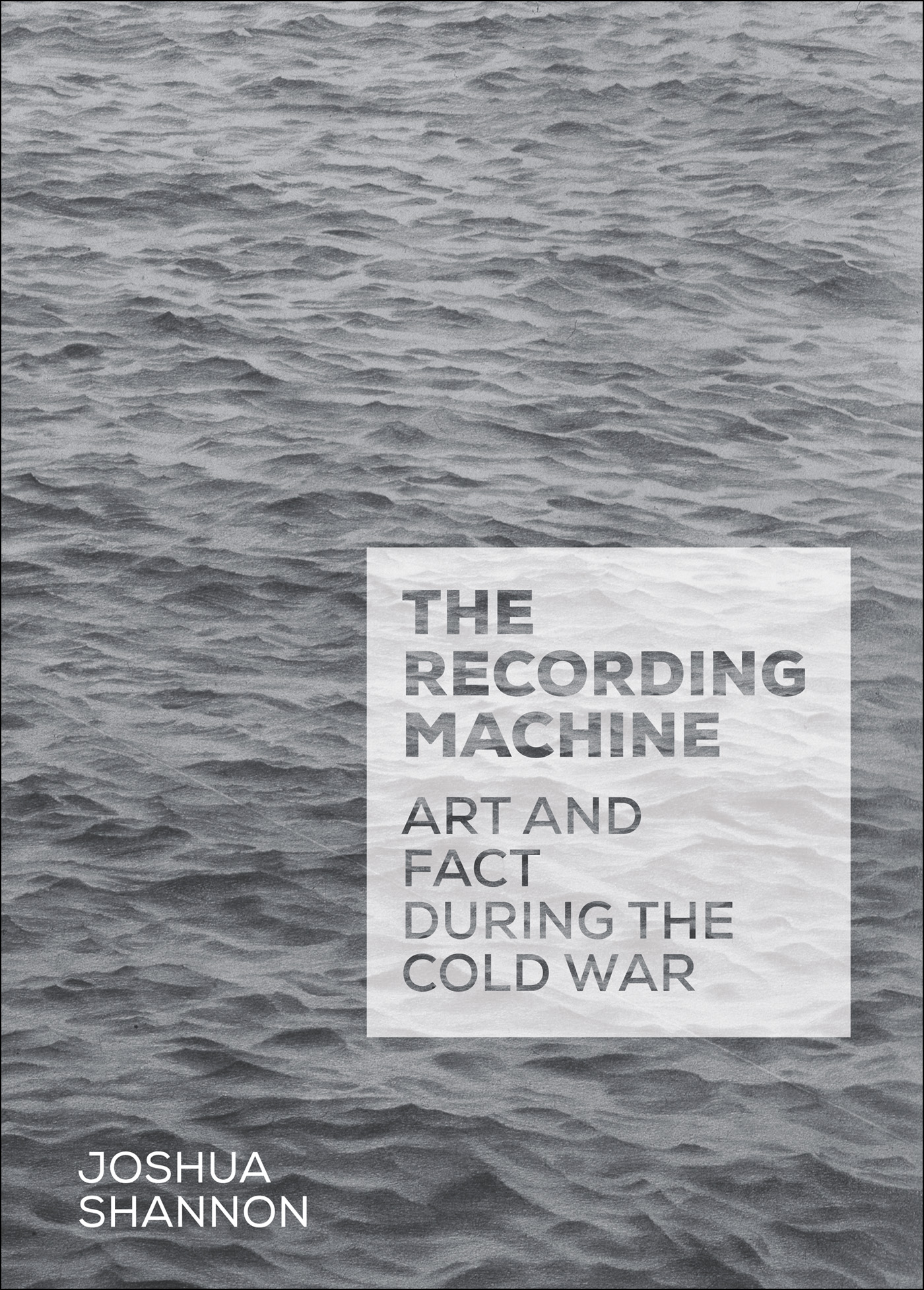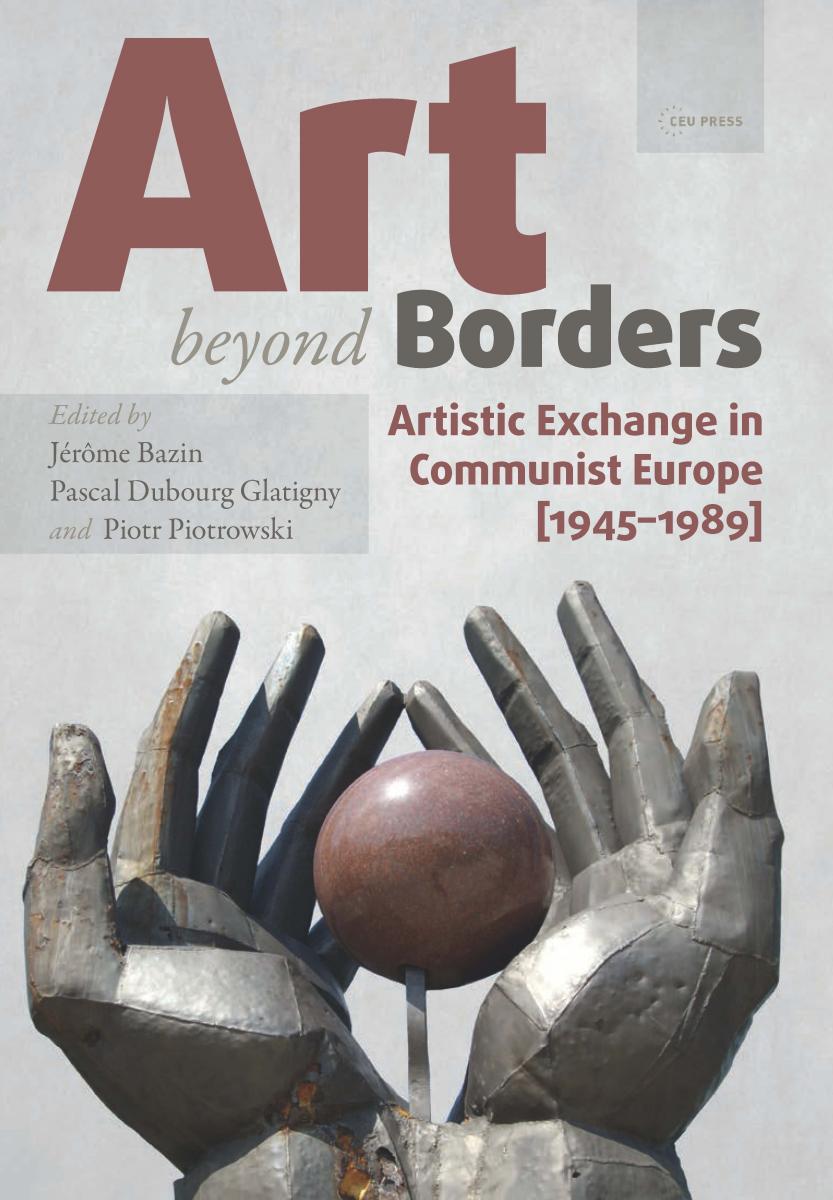Joshua Shannon: The Recording Machine: Art and Fact during the Cold War (2017)
Filed under book | Tags: · art history, cold war, conceptual art, fact, photography

“A revealing look at the irrevocable change in art during the 1960s and its relationship to the modern culture of fact.
This book offers a new understanding of the transformation of photography and the visual arts around 1968. Author Joshua Shannon reveals an oddly stringent realism in the period, tracing artists’ rejection of essential truths in favor of surface appearances. Dubbing this tendency factualism, Shannon illuminates not only the Cold War’s preoccupation with data but also the rise of a pervasive culture of fact.
Focusing on the United States and West Germany, where photodocumentary traditions intersected with 1960s politics, Shannon investigates a broad variety of art, ranging from conceptual photography and earthworks to photorealist painting and abstraction. He looks closely at art by Bernd and Hilla Becher, Robert Bechtle, Vija Celmins, Douglas Huebler, Gerhard Richter, and others. These artists explored fact’s role as a modern paradigm for talking, thinking, and knowing. Their art, Shannon concludes, helps to explain both the ambivalent anti-humanism of today’s avant-garde art and our own culture of fact.”
Publisher Yale University Press, New Haven, CT, 2017
ISBN 9780300187274, 0300187270
ix+230 pages
Review: Ina Blom (The Sixties, 2018).
Comment (0)Jérôme Bazin, Pascal Dubourg Glatigny, Piotr Piotrowski (eds.): Art beyond Borders: Artistic Exchange in Communist Europe, 1945-1989 (2016)
Filed under book | Tags: · art history, avant-garde, cold war, communism, east-central europe, eastern europe, ideology, networks, propaganda, socialist realism, southeastern europe

“This book presents and analyzes artistic interactions both within the Soviet bloc and with the West between 1945 and 1989. During the Cold War the exchange of artistic ideas and products united Europe’s avant-garde in a most remarkable way. Despite the Iron Curtain and national and political borders there existed a constant flow of artists, artworks, artistic ideas and practices. The geographic borders of these exchanges have yet to be clearly defined. How were networks, centers, peripheries (local, national and international), scales, and distances constructed? How did (neo)avant-garde tendencies relate with officially sanctioned socialist realism?
The literature on the art of Eastern Europe provides a great deal of factual knowledge about a vast cultural space, but mostly through the prism of stereotypes and national preoccupations. By discussing artworks, studying the writings on art, observing artistic evolution and artists’ strategies, as well as the influence of political authorities, art dealers and art critics, the essays in Art beyond Borders compose a transnational history of arts in the Soviet satellite countries in the post war period.”
Publisher CEU Press, Budapest/New York, 2016
Leipzig Studies on the History and Culture of East-Central Europe series, 3
Open access
ISBN 9789633860830, 9633860830
xii+494+24 pages
via x
PDF (126 MB, updated on 2020-11-25)
Comment (0)J. R. McNeill, Corinna R. Unger (eds.): Environmental Histories of the Cold War (2010)
Filed under book | Tags: · climate, cold war, ecology, environment, geopolitics, history, military, nuclear weapons, politics, war, war studies

“This book explores the links between the Cold War and the global environment, ranging from the environmental impacts of nuclear weapons to the political repercussions of environmentalism. Environmental change accelerated sharply during the Cold War years, and so did environmentalism as both a popular movement and a scientific preoccupation. Most Cold War history however entirely overlooks these developments, which were not only simultaneous but also linked together in ways both straightforward and surprising. The contributors to this book present these connected issues as a global phenomenon, with chapters concerning China, the USSR, Europe, North America, Oceania, and elsewhere. The role of experts as agents and advocates of using the environment as a weapon in the Cold War or, contrastingly, of preventing environmental damage resulting from Cold War politics is also given broad attention.”
Publisher Cambridge University Press, 2010
ISBN 0521762448, 9780521762441
362 pages
Reviews: Chaney (H-Net, 2011), Tucker (Michigan War Studies Review, 2012), Kinkela (Cold War History, 2013).
Conference report by Thomas Robertson (GFI Bulletin, 2007)
PDF (5 MB, updated on 2019-10-11)
Comment (0)
